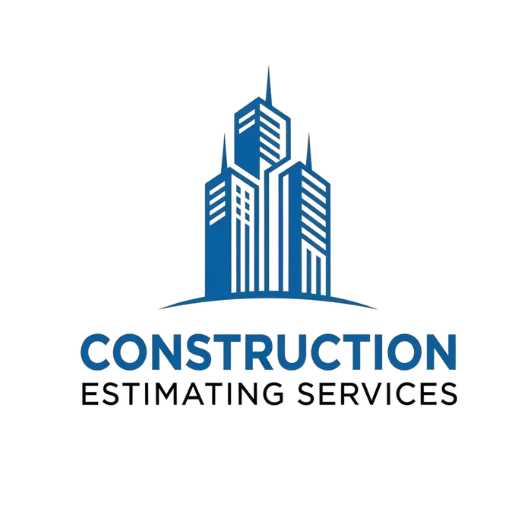How to Calculate Construction Cost: A Comprehensive Guide
Introduction Calculating construction cost is essential for project success. This guide provides a straightforward approach to estimating costs accurately for effective planning.
Throughout my years in the construction industry, aside from the technical application of the science of building, I have reached an understanding of the importance of estimating construction time and costs. One of the most vital aspects to consider is estimating the prices and costs for the building. In this blog post, I will share my insights on calculating construction costs effectively, providing you with all the necessary data for successful planning.
Understanding Construction Cost Estimation
Before diving into cost calculations, it’s crucial to understand what construction estimation is. Construction estimation is the process of forecasting the expenses involved in building a physical structure. This is an essential phase of project planning and management, as it helps determine project feasibility, supports budgeting, and enables efficient resource allocation.
Accurate construction cost estimation serves as a roadmap for successful project completion. It is about more than just identifying potential expenses—it’s about providing clarity for every stakeholder involved, reducing financial risk, and setting realistic project expectations. A well-thought-out estimate can be the difference between a project’s success and failure.
Critical Components of Construction Cost
To accurately estimate costs, several key components must be considered:
- Materials: Construction materials represent a significant portion of overall costs. This includes everything from raw materials, such as cement, steel, and bricks, to finished materials like tiles and fixtures. Estimators must consider both the quantity and cost of each material, which can vary due to market conditions.
- Labour: Labor costs include wages, benefits, and any other costs associated with the workforce. These costs are influenced by the number of laborers required, the duration of their work, and their level of expertise.
- Equipment: Equipment costs can include the purchase, rental, and operational costs of machinery. Cranes, excavators, and other specialized machinery can make up a significant part of the budget, depending on the project’s scope.
- Overhead Expenses: Overhead expenses are the indirect costs that keep a project running, such as office supplies, site utilities, project management, insurance, and safety measures. Properly estimating these helps in avoiding budget overruns.
- Permits and Fees: Every construction project must comply with local regulations, which often involves obtaining permits and paying associated fees. These legal requirements can add up, depending on the project’s complexity and location.
- Contingencies: Contingency allowances are budgeted funds set aside for unexpected costs. Typically, a contingency of around 5-10% of the total estimated cost is allocated to cover unplanned expenses.
How to Estimate Construction Materials
Estimating construction materials accurately is critical for avoiding cost overruns and ensuring that the project progresses smoothly. Here are the steps to estimate construction materials:
- Examining Blueprints and Specifications: Blueprints and specifications provide a detailed overview of the project. Thoroughly reviewing these documents is the first step to understanding the scope and identifying material needs.
- Creating a Detailed List of Required Materials: The estimator must prepare a complete list of materials, considering every element of the project. This includes both major materials (e.g., cement, steel, bricks) and minor items (e.g., nails, adhesives).
- Determining Quantities for Each Material: Calculating the quantities of materials involves measurements based on blueprints. This may involve formulas for volume, area, and weight. It’s crucial to ensure that quantities are calculated precisely to avoid shortages or surpluses.
- Knowing Market Rates and Understanding Economic Policies: Material prices can fluctuate due to market conditions, supply chain issues, and economic policies. Understanding these factors helps in determining the realistic cost of materials.
- Accounting for Waste and Overage: Typically, around 10% overage is accounted for to cover wastage and unforeseen needs. This ensures that the project doesn’t come to a halt due to material shortages.
Cost Estimation Methods in Construction
There are several methods professionals use to estimate costs in construction, each suited for different project types and requirements:
- Analogous Estimating: Also known as top-down estimating, this method uses historical data from similar projects to estimate current project costs. It’s quick but may not be accurate for unique projects, as it does not account for specific project nuances.
- Parametric Estimating: This technique uses statistical models and historical data to establish relationships between different project variables. For instance, if a previous project cost $200 per square foot, a similar project can be estimated using this parameter, adjusted for inflation or other factors.
- Bottom-up Estimating: This approach involves estimating costs for each element of the project, such as materials, labor, and equipment, and adding them together to get a total project cost. Although time-consuming, it’s one of the most accurate methods as it considers every detail.
- Three-point Estimating: This method involves calculating three potential outcomes—optimistic (best-case), pessimistic (worst-case), and most likely. Averaging these outcomes helps create a balanced estimate that takes into account uncertainties.
The Role of a Construction Estimator
The construction estimator plays a crucial role in ensuring the accuracy of cost estimates. Their responsibilities include:
- Analyzing Blueprints and Documents: A construction estimator scrutinizes architectural drawings and other project documents to determine the materials and labor required for a project. This thorough analysis lays the foundation for an accurate estimate.
- Detailed Cost Breakdown: Creating a comprehensive estimate includes breaking down costs for materials, labor, and equipment. It ensures that no element is overlooked and that all cost aspects are covered.
- Coordination with Subcontractors and Suppliers: Estimators often liaise with suppliers and subcontractors to get quotes and verify that the estimates are current and reasonable. This step ensures cost inputs are realistic.
- Supporting Decision-making: Providing accurate estimates allows project managers to make informed decisions regarding hiring, material procurement, and overall project budget management.
Utilizing Technology in Cost Estimation
The use of technology has revolutionized construction cost estimation, making it more efficient and accurate. Various tools and software are available to assist estimators in their work:
- Building Information Modeling (BIM) Software: BIM software provides a 3D digital representation of the building, incorporating geometry and spatial relationships. It helps estimators visualize the structure, understand material quantities, and spot potential cost issues before they arise.
- Specialized Construction Estimation Software: Software such as PlanSwift, CostX, and ProEst offer specialized tools to create detailed cost estimates quickly and efficiently. These tools often come with databases of material costs and labor rates, which are crucial for precise estimation.
- Cloud-based Collaboration Tools: Tools like Procore and Buildertrend allow project stakeholders to collaborate seamlessly. This means any updates to the project can be quickly communicated to all relevant parties, helping keep estimates accurate and up-to-date.
- Mobile Apps for On-site Data Collection: Mobile apps are also becoming increasingly popular for on-site data collection. Estimators can take notes, photos, and measurements directly in the field and upload them to a central platform, ensuring the information used for estimates is current.
The Importance of Accurate Cost Estimation
Accurate cost estimation is essential for various reasons:
- Determining Project Feasibility: A well-prepared cost estimate helps determine if a project is financially viable. This evaluation helps clients and stakeholders decide whether the project should proceed.
- Budgeting and Financial Planning: Cost estimation guides project budgeting, ensuring that enough funds are allocated for every stage of construction. This helps in avoiding financial shortages during the execution phase.
- Securing Financing and Funding: Lenders and investors often require detailed cost estimates to assess the risk associated with financing a project. Accurate estimates can help secure necessary funding.
- Decision-Making for Subcontractor Bids: Cost estimates serve as a benchmark for evaluating subcontractor bids, ensuring that the project remains within budget while selecting the most competitive bid.
- Preventing Cost Overruns and Delays: Accurate estimation reduces the likelihood of cost overruns, which can lead to project delays and financial losses. Planning for potential contingencies also ensures that unexpected costs are managed effectively.
Common Challenges in Construction Cost Estimation
Cost estimation in construction presents various challenges, including:
- Fluctuating Material Prices: Construction material prices can fluctuate due to changes in market conditions, supply chain disruptions, and other economic factors. Staying informed about current market trends is crucial to provide accurate estimates.
- Unforeseen Site Conditions: Unexpected site conditions, such as soil quality issues or hidden utility lines, can add unexpected costs to a project. These risks must be factored into estimates as contingencies.
- Design Changes During Construction: Changes in the project design during construction can significantly impact the overall cost. Estimators must work closely with the design team to incorporate any modifications into the cost plan.
- Labor Cost Variations: Labor costs can vary depending on local economic conditions, availability of skilled workers, and regulatory changes. Accurately predicting these variations is key to effective cost estimation.
Mitigating Challenges in Cost Estimation
To effectively mitigate these challenges, the following strategies can be employed:
- Market Analysis: Regular market analysis helps in predicting price trends for materials, labor, and equipment. This foresight allows estimators to make informed assumptions and prepare for price variations.
- Contingency Planning: Allocating a portion of the budget for contingencies helps in dealing with unforeseen expenses. This can be a lifesaver for keeping the project on track despite unexpected issues.
- Collaboration and Communication: Maintaining open communication channels with all project stakeholders helps ensure that estimates are updated as new information becomes available. Collaboration reduces the risk of discrepancies between initial estimates and actual costs.
- Regular Re-evaluation of Estimates: Estimates should be regularly updated as the project progresses. This practice helps in aligning cost expectations with reality, preventing unpleasant surprises.
Utilizing Historical Data for Accurate Estimation
Historical data plays an invaluable role in cost estimation. By analyzing costs from previous similar projects, estimators can develop more realistic projections for new projects. Key steps include:
- Data Collection: Gathering accurate and detailed data from past projects is the first step in leveraging historical data effectively.
- Benchmarking: Comparing ongoing projects to historical data allows estimators to identify cost patterns and make informed adjustments to their estimates.
- Adjusting for Specific Conditions: No two projects are identical. Adjustments must be made to account for differences in size, scope, geographical conditions, and inflation.
Conclusion
Determining construction costs is a complex but crucial process in the construction industry. Accurate estimation requires a mix of technical knowledge, experience, and detailed analysis. By applying the techniques and tools discussed in this guide, you’ll be well-equipped to handle the challenges of construction cost estimation.
Remember, accuracy in estimation forms the foundation for project success, customer satisfaction, and the financial health of construction firms. Mastering this skill will undoubtedly enhance your career in the construction industry.
Accurate cost estimation is not just about numbers; it’s about building confidence in your project—ensuring that you have a clear, reliable roadmap to complete a project on time and within budget. The methods and insights shared in this guide provide a thorough understanding of how to approach cost estimation strategically. With practice and continuous learning, you’ll find that cost estimation becomes a powerful tool in your construction career, enabling you to execute projects effectively, deliver on client expectations, and drive growth for your business.












